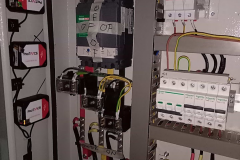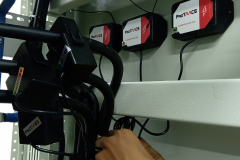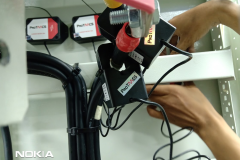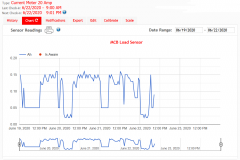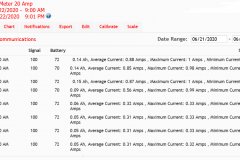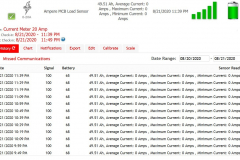ProTAACS Wireless RF AC Current Meter - AA Battery Powered
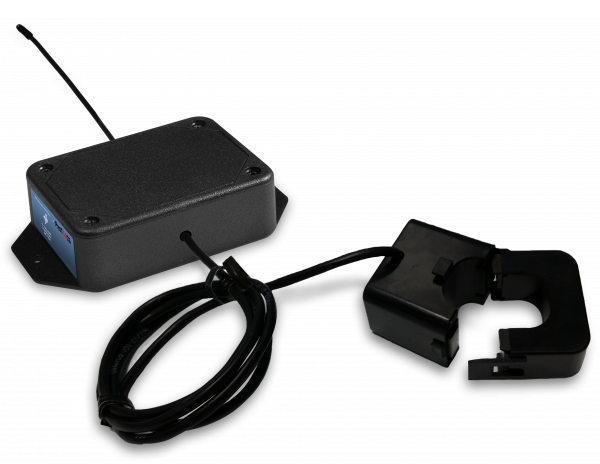
The wireless AC Current Meter measures the RMS current of an alternating current (AC) system using a current transformer (CT) that wraps around the “hot” wire of a two wire (hot, common, ground(optional)) power system. The sensor reports Minimum RMS current, maximum RMS current, average RMS current, and amp hours to the iProTAACS system. The iProTAACS system is capable of generating watt hour or kilowatt hour readings as well.
- Measures amp hours, max RMS current, min RMS current, and average RMS current
- Two different current transducers available:
- Low Current: 0-20 Amp
- High Current: 0-150 Amp
- Capable of generating Watt Hour or Kilowatt Hour readings using iProTAACS
- Data logging for accumulated amp hour readings
- Can notify based on current levels or changes in current levels
- Simple and safe installation of current/power measurement hardware, no rewiring required
Free iProTAACS basic and iProTAACS Mobile apps for Android online wireless sensor monitoring and notification system to configure sensors, view data and set alerts via SMS text and email
STANDARD AC CURRENT METER AVAILABLE IN TWO OPTIONS :
- 20 Amps
- 150 Amps
ProTAACS wireless AC Current Meters measure the RMS current of an alternating current (AC) system using a current transformer (CT) that wraps around the “hot” wire of a two wire (hot, common, ground(optional)) power system. The sensor reports Minimum RMS current, maximum RMS current, average RMS current, and amp hours to the iProTAACS system. The iProTAACS system is capable of generating watt hour or kilowatt hour readings as well.
The standard version of this sensor is powered by two replaceable 1.5 V AA sized batteries (included with purchase). This sensor is also available with a line power option. The line powered version of this sensor has a barrel power connector allowing it to be powered by a standard 3.0 – 3.6 V power supply (Included with Line Power option upgrade). The line powered version also uses two standard 1.5 V AA batteries as backup for uninterrupted operation in the event of line power outage.
Power options must be selected at time of purchase, as the internal hardware of the sensor must be changed to support the selected power requirements.
To measure current, clip the CT around only a single wire of the AC system (clipping around a hot and neutral wire at the same time will result in 0 current readings). After the sensor powers on and connects to the gateway it will begin taking measurements based on the averaging interval (5 seconds default). It will report data to iProTAACS every heartbeat or if the current goes outside of the aware thresholds set in iProTAACS. The sensor reports amp hours, max RMS current, min RMS current, and average RMS current. iProTAACS can also generate watt hour or kilowatt hour readings if a default RMS voltage is set in iProTAACS.
- Wireless Range: 250 – 300 ft. (non line-of-sight /indoors / through walls, ceilings & floors) *
- Communication: RF 900, 920, 868 and 433 MHz
- Power: Replaceable batteries (optimized for long battery life) – Line-power (AA version) and solar (Industrial version) options available
- Battery Life (at 1 hour heartbeat setting): **
- AA battery > 4-8 years
- Industrial > 4-8 years
* Actual range may vary depending on environment.
** Battery life is determined by sensor reporting frequency and other variables.
- Current Monitoring
- Current Usage
- Amperage Monitoring
- Amp Hour Meter
And many more…
Two replaceable 1.5V AA sized batteries are included with the standard model. A line-power version with battery backup is also available – allowing it to be powered by a standard 3.0 – 3.6V power supply and use the internal batteries if there is a power interruption.
Power options must be selected at time of purchase as the internal hardware of the sensor must be changed to support the selected power requirements.
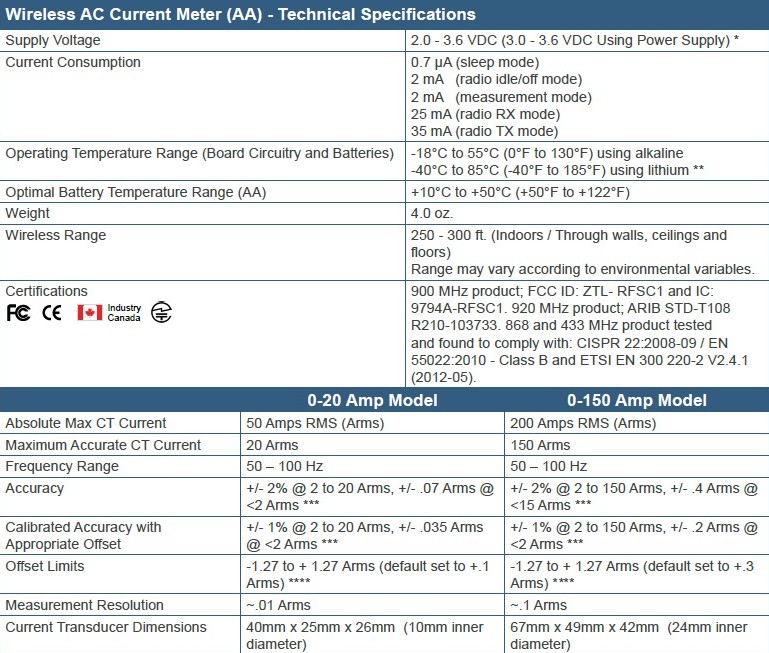
* Hardware cannot withstand negative voltage. Please take care when connecting a power device.
** At temperatures above 100°C, it is possible for the board circuitry to lose programmed memory.
*** CTs are inherently less accurate at or below 10% of max range. For best results; calibrate at a current between 30% and 90% of max accurate range.
**** Offset is used to overcome a diode voltage drop inherent to the hardware. To accurately account for this drop a default offset is used. To best identify the optimal value of this offset; make a series of measurements at .2 to 2. Arms and find the current (Arms) difference between your measurement standard and the ProTAACS sensor.
